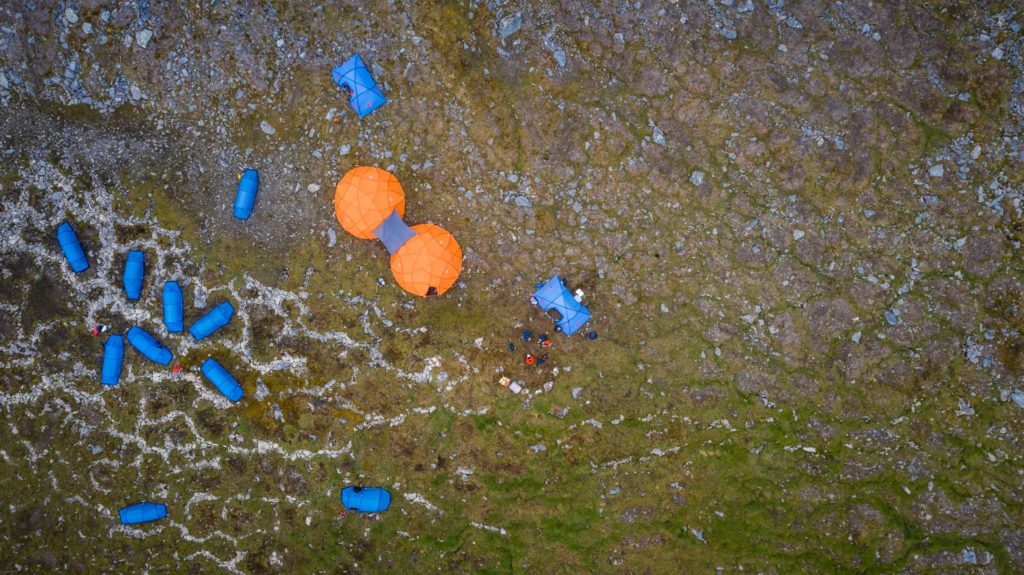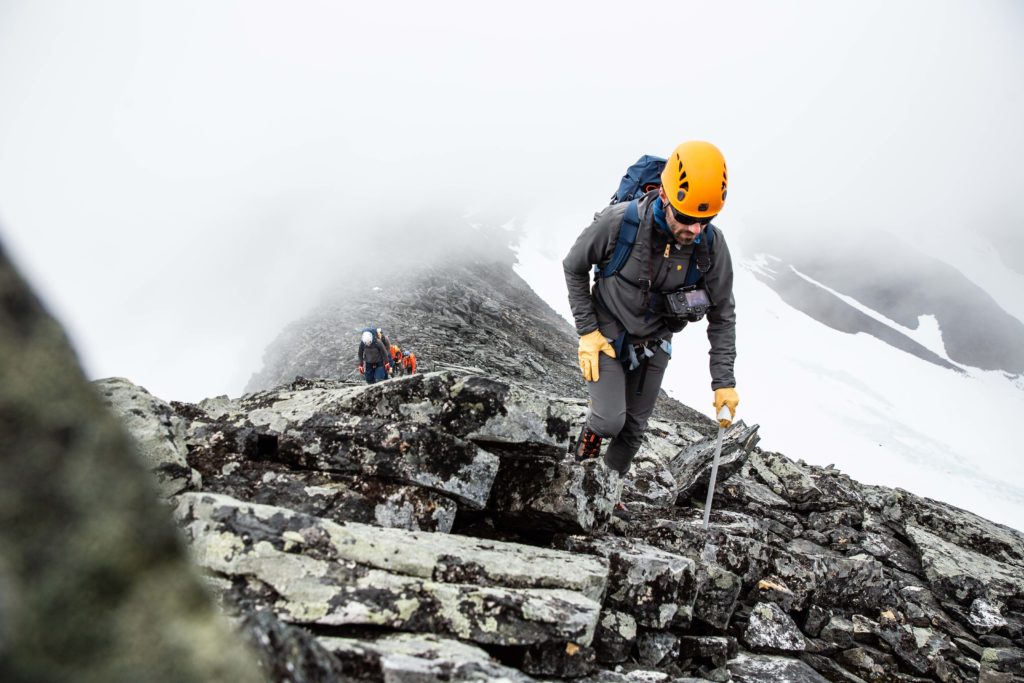"Don't worry. To fall here, you have to jump." And that is exactly what I am worried about, as beside me the abyss yawns and I try my best not to think about the time a fall would take before I smash...
Text: Gerben Bijpost Photography: Anette Andersson
The grade to the summit is littered with grey boulders and slabs. Smooth, sharp and hard. I scramble from rock to rock, focusing myself on the next step. Above all, don't look to the right, where a chilly white cloud cover hides a perpendicular depth. That it is deep I know, because just a few hours ago I was standing at the bottom of this mountain and had just been dropped by a helicopter.
 Besides, I don't think looking to the left is an option either. It may be less steep, but in my imagination I can already see myself stumbling, flipping over and gaining more and more speed, bouncing down for two kilometres. Straight up, then, knowing that I will soon have to descend along the same road. I swallow once and jump to the next boulder. The summit is getting closer and closer.
Besides, I don't think looking to the left is an option either. It may be less steep, but in my imagination I can already see myself stumbling, flipping over and gaining more and more speed, bouncing down for two kilometres. Straight up, then, knowing that I will soon have to descend along the same road. I swallow once and jump to the next boulder. The summit is getting closer and closer.
Arctic Circle
The location is Lapland. More precisely: the domain of Sweden's highest mountain Kebnekaise, some two hundred kilometres above the Arctic Circle, in the northernmost tip of this vast country. What I, with my fear of heights, have to do here? A challenge. A piece of self-conquest. And last but not least, an introduction to the Bergtagen collection by Swedish outdoor brand Fjällräven.
Bergtagen is a wonderful old Swedish word. Derived from legends, when trolls still existed and lured careless Swedes into the mountains, captured them and used them as slaves. Those who managed to escape and return to civilisation turned out to be changed beyond recognition. Captivity in the mountains had destroyed their personalities and driven them to madness.
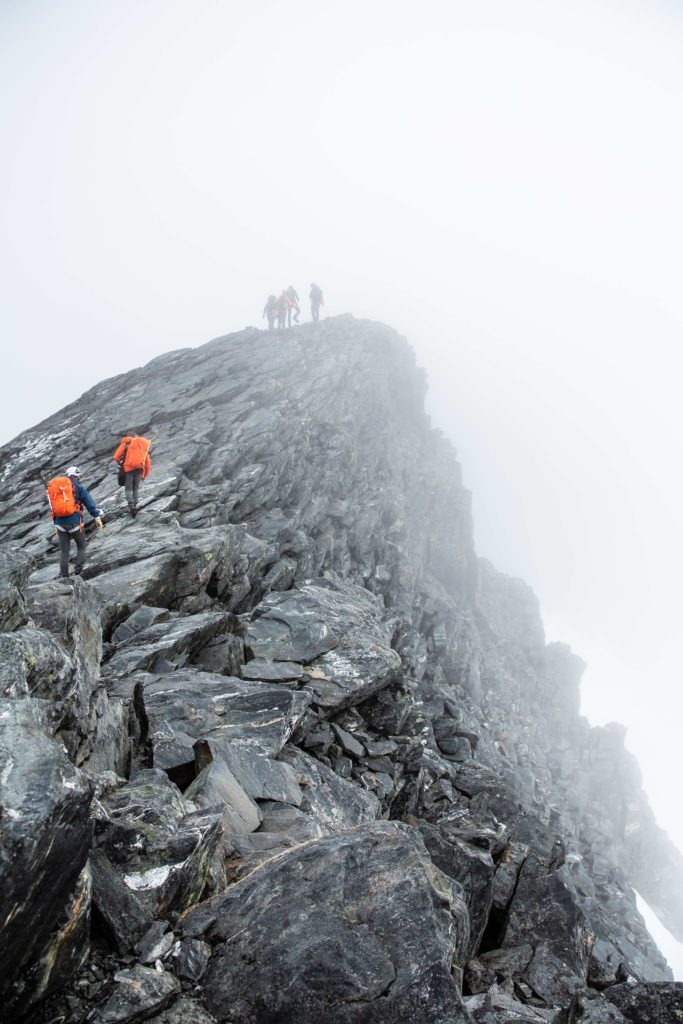 Love of mountains
Love of mountains
Today, Bergtagen has a more cheerful meaning. More like 'fascinated by' or 'madly in love with' the mountains. Because that is what this collection is all about: mountaineering, a favourite terrain for the brand founded in 1960 by outdoor enthusiast and innovator Åke Nordin in the small northern town of Örnsköldsvik. It is now available in more than 70 countries and the 1978 classic Kånken -you know, that little rectangular backpack- has become a staple on the streets. The Greenland Jacket, Fjällräven's first jacket from 1968, and the Expedition Down Jacket from 1974 are also as popular as ever after so many years.
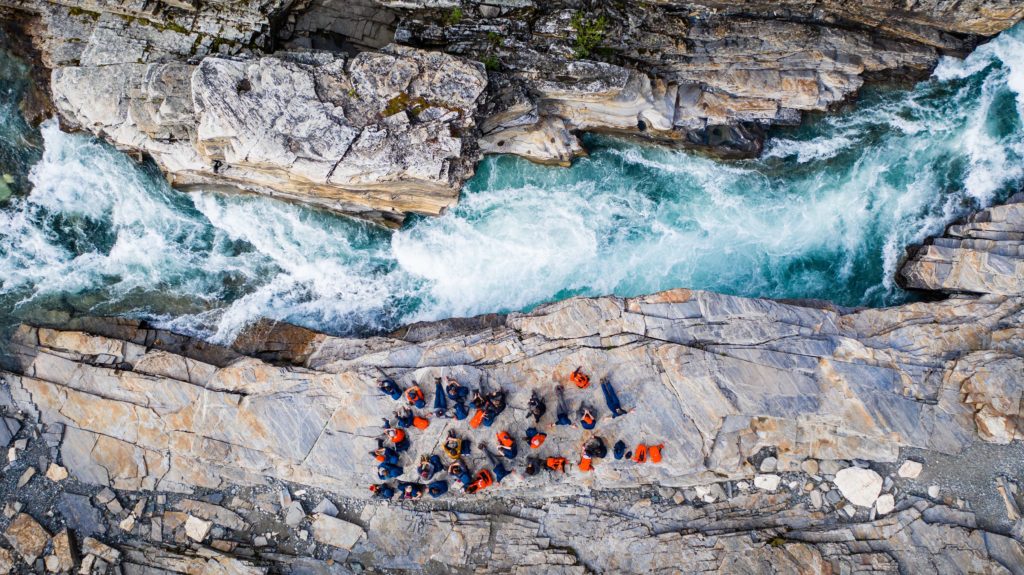 Sustainable
Sustainable
Over all these years, Fjällräven has had one mission: to make outdoor life easier for people. This is not only pleasant for people, but also for nature itself, says Fjällräven CEO Martin Axelhed. "Because when people can enjoy nature comfortably, they develop a greater love for it and will take better care of it." A premise that already indicates that Fjällräven values sustainability.
"True. We will never set world records with the lightest products. That is not our aim. What you can count on is that they are strong, functional, well thought-out, that they can handle the challenges they are used for. And that they are durable." Indeed, Fjällräven has set itself the goal of becoming the world's most sustainable outdoor brand. In their own words, "We are far from there, but closer than ever".
 Many faces
Many faces
This sustainability has many faces. It is about how you make things, but also where you make them. And with what. About the traceable origin of raw materials, so that you know they are also OK. About reducing water use, about eliminating pfc use (perfluorinated and polyfluorinated chemicals). About the recyclability of products. And about transporting products to the end consumer. But it goes even further than that.
Christina Dolva Tornberg, Head of Sustainability: "One of my favourite Fjällräven jackets is one I actually found in my grandmother's cupboard, aged 74. She bought it 40 years ago, wore it for a long time and has kept it ever since. And now I walk around in it. Because not only has the quality remained fine, but also because I simply like it. That is often another underestimated element of sustainability: designing things that can still be worn in a long time, because they are not trend-sensitive, but timeless. An optimal mix between quality, the ability to easily repair things and well-considered design. Then something can last for generations."
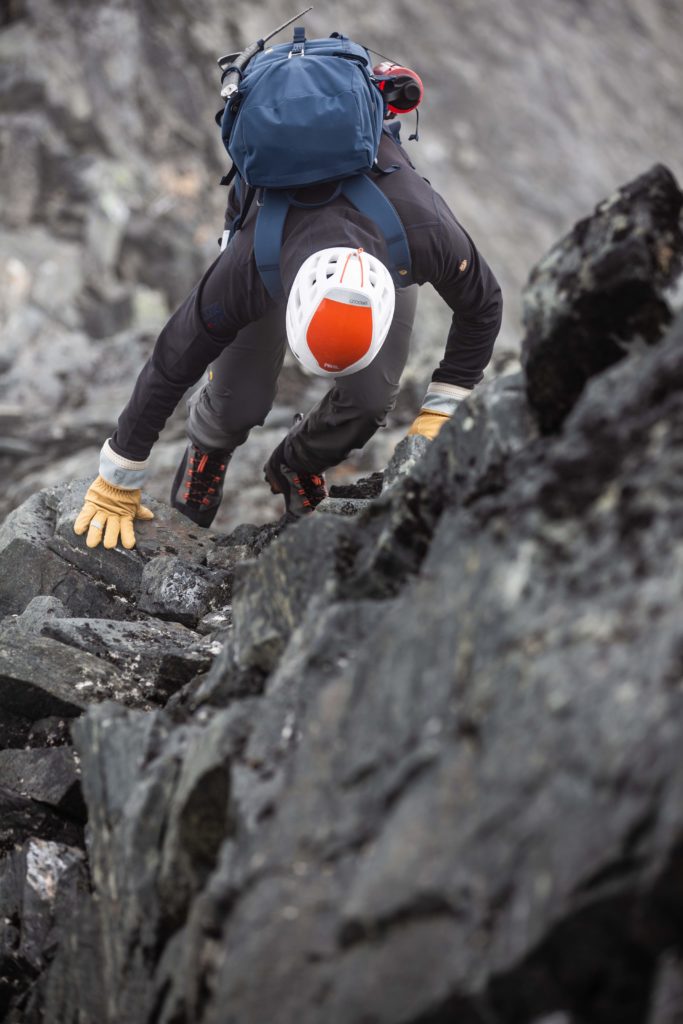 Comfortable
Comfortable
Also not unimportant: the comfort of these Fjällräven Mountain Days collection. Because, of course, that is what I will be dealing with first and foremost during this voyage of discovery. Indeed, for a comprehensive introduction to this fitting biotope, I am dressed from head to toe in the new Bergtagen line for the occasion.
Clothes on, not a leisurely wear-in or run-in first, but straight into the mountains and hard work. Indeed, it is hard to imagine a better test method. That is why Fjällräven invited an international group of journalists, who, accompanied by a couple of experienced mountain guides of course, could get to know mountaineering and the clothing line developed for it. To prove how good it is.
Mountain guides
So there I am walking. Somewhere on the steep slope of one of Scandinavia's highest mountains, perhaps not too comfortable in terms of peace of mind, but there is nothing to be said for the clothes. It fits like a glove. But I did not expect anything else. After all, Fjällräven Bertagen is not only the most advanced collection from the brand, but also designed in close cooperation with the Sweden Mountain Guide Association, people who know what they are talking about. The garments, all with their own specific properties, can be easily combined to provide optimal protection depending on activities and weather.
"Initially, the Bergtagen collection was designed for Scandinavian winter, but it has now been expanded to include items suitable for warmer weather conditions," says Erik Blomberg, Head of Innovation. That means lighter materials with better ventilation, but which can also withstand the harsh conditions you might encounter high in the mountains.
"What I particularly like is that the clothes offer a lot of freedom of movement and you don't get too hot in them easily. The design is kept nice and simple and the details are great. After all, we don't want unnecessary details that weigh down and complicate our outfits," says mountain guide Magnus Strand, who is also very pleased with the weight of the clothing. "We always take a complete kit with us on our climbing trips. Reinforced items and rainwear we don't often use, but we have to carry. So using lighter materials for this is a godsend for us. Plus the fact that the items are very functional and you can always put them on quickly, should the need arise."
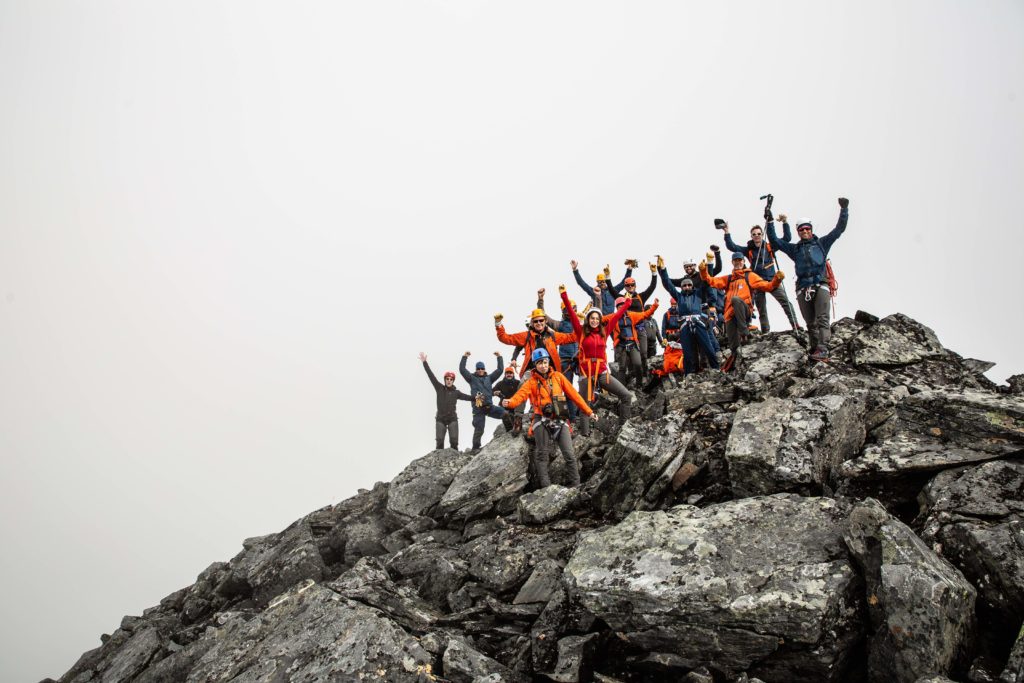 Case in point are the waterproof shell trousers and jackets made in the new, lightweight Bergtagen Lite Eco-Shell. It dries quickly and is composed of three layers laminated into a thin and pleasantly flexible material. "There are certainly thinner materials and garments on the market, but they do not last as long. These products are reliable in the toughest conditions, so you will enjoy them for a long time. For us, that's important," says Blomberg.
Case in point are the waterproof shell trousers and jackets made in the new, lightweight Bergtagen Lite Eco-Shell. It dries quickly and is composed of three layers laminated into a thin and pleasantly flexible material. "There are certainly thinner materials and garments on the market, but they do not last as long. These products are reliable in the toughest conditions, so you will enjoy them for a long time. For us, that's important," says Blomberg.
Dent in ego
And as I continue to carefully place one foot in front of the other and the top of the mountain finally comes into view, I discover something else important, perhaps just as relevant: "What you are doing now is not real mountaineering," a mountain guide confides in me, in fact. "We qualify this as advanced hiking, an advanced hike". Whew, that's a bit of a dent in my ego. Because gaping abyss or not, I am thus not even mountaineering, but merely spirited hiking - in their view. But at the same time, it is nice to note that that Bergtagen line turns out to be a perfectly suitable choice for that too. So it does not necessarily need to be challenged to the extreme to come into its own. Any outdoor adventure will do.